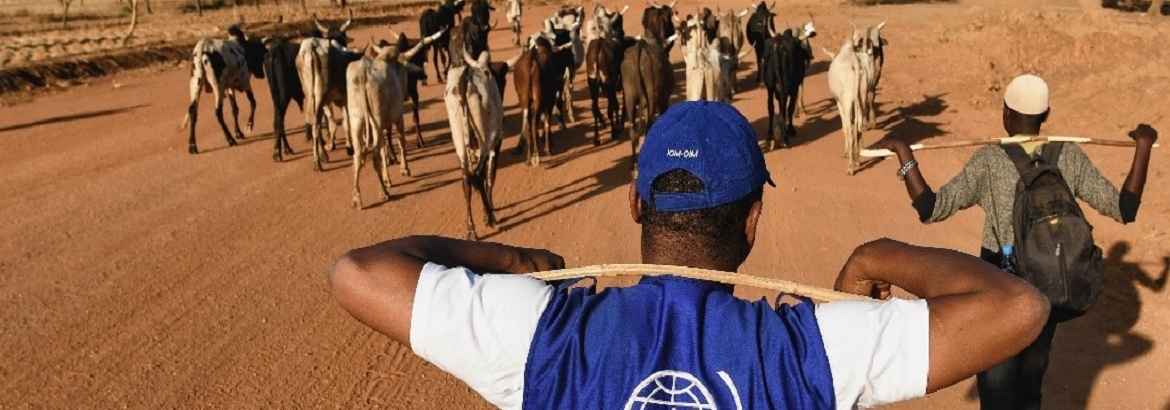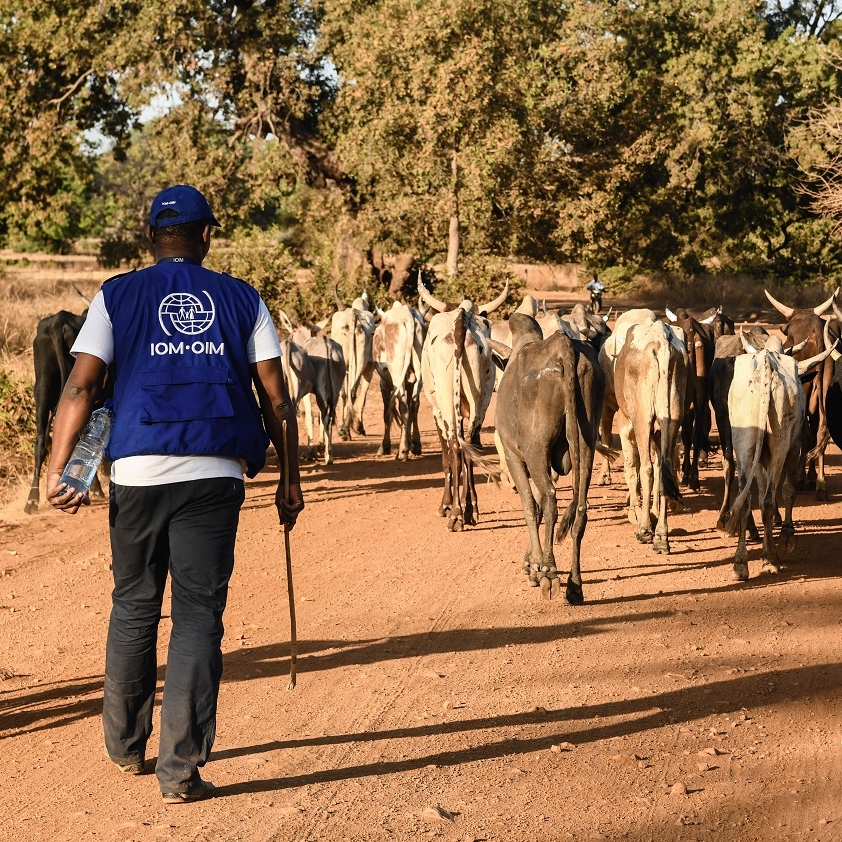IOM Vision
With climate change impacting the route and calendars of nomadic herders throughout Western and Central Africa, imposing upon all stakeholders the need to ensure peaceful cohabitation between all groups and reduce the risk of violence and forced displacement due to competition over access natural sources, IOM aims to continue to support, at the local level, its Member States to develop early alert mechanisms and to reinforce local conflict mitigation strategies to pre-empt the risk of conflicts associated with herds movements, and, at the regional level, ECOWAS, its Member States, the Regional Herders Network and its national members, promoting multilateralism by ensuring that ECOWAS remains the forum where international transhumance is managed in a harmonized way.
Objective
Driving solutions to displacement
|
IOM will target internally displaced persons (IDPs) farmers and nomadic herders and their communities that can be at risk of disrupted social cohesion and conflicts induced by transhumance movements in at-risk zones along north-south movement corridors, in particular in border regions. In addition IOM will target relevant entities, including 13 regional and national pastoral organizations. Activities will also benefit 54 local authorities. |
|
IOM applies its substantial experience in community stabilization along at-risk zones, as defined by the Transhumance Tracking Tool, to work with local governance structures in communities regularly affected by transhumant movements to define conflict mitigation and resolutions methods. IOM contributes to build the capacity of representatives from the above entities to establish or strengthen inclusive, transparent and accountable decision-making processes. The decisions that are taken within the various fora supported by IOM to improve a service benefit a larger number of users; being local or temporarily stationing or crossing the area. The way the activities are carried out will impact the perception of relegation among the various groups, thus contributing to a greater social cohesion and stability. IOM’s programmes in eleven targeted countries (Mauritania, Mali, Niger, Burkina Faso, Cameroon, Chad, Nigeria, Central African Republic, Cote d’Ivoire, Guinea and Sierra Leone) shall include the following activities:
IOM promotes participatory local decision-making processes to define priority actions while supporting relevant line ministries to respond directly to communities, who may otherwise be aggrieved, in the prioritization process. |
To promote peace in the region in a context of transhumance, IOM will support the transitioning of groups out of conflict and provide support to community reconciliation processes as well as seek to mitigate the drivers of conflict. Interventions will include:
- Empowering local conflict mitigation mechanisms and supporting conflict resolution processes between herders and farmers along transhumance corridors.
- Supporting participatory local decision-making processes to define priority activities and infrastructures that contribute to conflict mitigation or resolution, notably through protection mainstreaming and inclusion of marginalized voices/groups in peacebuilding activities.
- Accompanying relevant line ministries to support communities out of conflict.

Objective
Contribute to an evidence-based and efficient crisis response system
|
Direct support of IOM’s data collection related to transhumance targets entities with a three-pronged approach:
|
|
IOM supports its Member States along the regional transhumance corridors to develop and apply a unified data collection mechanism to inform sound policies as it pertains to the regional governance of transhumant mobility. To do so, IOM broadened the application of the Transhumance Tracking Tool as follows:
|
Mauritania, Mali, Guinea, Niger, Burkina Faso, Côte d'Ivoire, Ghana, Benin, Nigeria, Chad, Cameroon, Central African Republic
The map used here is for illustration purposes only. Names and boundaries do not imply official endorsement or acceptance by IOM.
Figures are as of 31 December 2023. For more details of IOM's operational capacity in country, please see the IOM Capacity section.





